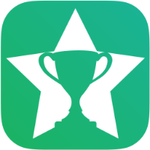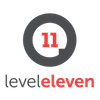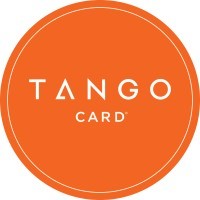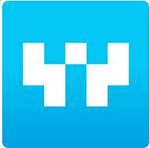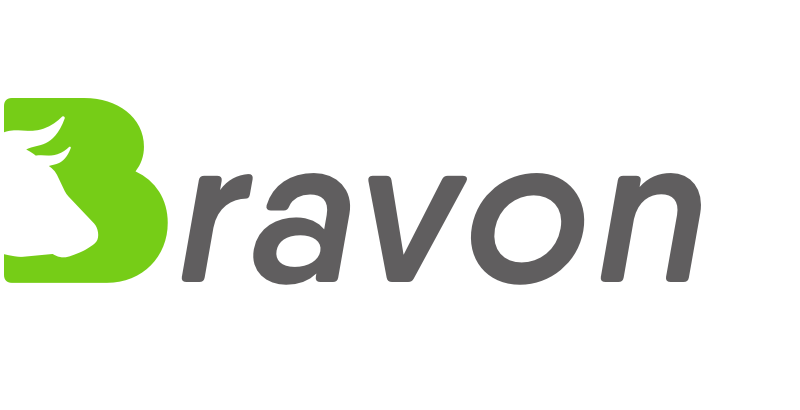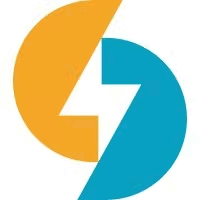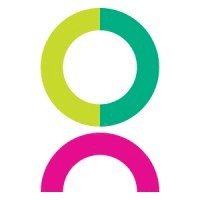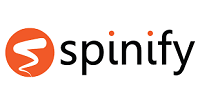What Is Sales Gamification Software?
Sales gamification software is an effective tool for motivating and engaging sales teams by introducing game elements into their regular tasks and activities. It employs game mechanics such as points, leaderboards, challenges, and awards to create healthy competition and motivate sales personnel. This program takes advantage of the natural human drive for competition and recognition to boost motivation and productivity, ultimately leading to better sales results.
Sales gamification software assists teams in remaining motivated, engaged, and pushed to meet their sales targets by creating a fun and dynamic atmosphere. Aside from increasing motivation and engagement, sales gamification software provides managers with vital information on their team's performance. Managers may use customisable dashboards and metrics to analyze individual and team progress, identify areas for improvement, and make data-driven choices to improve their sales operations.
Furthermore, sales gamification software is compatible with existing CRM systems, making it a smooth addition to the sales workflow. This enables a more streamlined and effective approach to measuring and controlling sales efforts, resulting in improved outcomes and more income.
What Are The Recent Trends In Sales Gamification Software?
Sales gamification software is a fast increasing segment of the software market, with more and more businesses resorting to these solutions to improve their sales effectiveness. The ever-changing corporate landscape and increased competitiveness have resulted in the creation of new trends in sales gamification technology.
Let's explore, we'll go over the most recent trends in sales gamification software that purchasers should consider before making a purchase.
1. Real-Time Data And Analytics: The use of real-time data and analytics is the most recent trend in sales gamification software. This enables sales teams to rapidly monitor their performance and make data-driven decisions to improve their results. Managers can use real-time dashboards and leaderboards to monitor their team's success and highlight areas for improvement.
2. Personalization: Personalization has become an important component in sales gamification software. It entails personalizing challenges, rewards, and goals to meet the unique needs of each salesperson. This not only boosts their drive but also helps them reach their full potential by concentrating on their strengths and limitations.
3. Mobile Optimization: With the development of remote work, sales staff are no longer limited to the office and are frequently on the move. This has resulted in an increase of mobile-optimized sales gamification software, which enables sales reps to participate in challenges and measure their success using their smartphones or tablets.
4. Integration With Other Sales Tools: Sales gamification software is increasingly being connected with other sales tools including CRM, performance management, and learning management systems. This integration reduces operations and provides a complete picture of sales performance across several platforms.
5. Multichannel Gamification: Previously, sales gamification was restricted to a single platform, such as a sales leaderboard. However, the most recent trend is to include gamification across many channels, such as email, social media, and even offline events. This provides a more immersive and engaging experience for sales representatives.
6. Emphasis On Soft Skills: While sales gamification has typically been used to improve hard skills like closing transactions, there has been a shift toward including soft skills into the gamification process. This includes challenges and rewards for communication, cooperation, and problem-solving skills, all of which are required for effective sales encounters.
Benefits Of Using Sales Gamification Software
Sales gamification software is a potent tool that motivates and engages sales teams through game mechanics and components. It elevates the routine and competitive nature of sales to a thrilling and dynamic experience. With the development of remote work and virtual sales teams, sales gamification software has become a popular option for businesses trying to improve their sales performance.
Here are some advantages of adopting sales gamification software:
1. Increased Engagement And Motivation: Sales teams are frequently motivated by competition and recognition. By incorporating gamification components such as leaderboards, points, and badges, sales gamification software fosters a sense of healthy competitiveness among teammates. This encourages them to perform better and increases their participation in the sales process.
2. Increased Knowledge Retention: Sales gamification software can be integrated with training courses to strengthen learning and retention. By incorporating quizzes, challenges, and examinations, the program ensures that sales representatives are always learning and improving their knowledge and skills.
3. Real-Time Performance Tracking: Sales gamification software allows managers and team leaders to monitor the performance of their team members in real time. This provides vital insights into each team member's strengths and limitations, allowing for more targeted coaching and support.
4. Encourages Collaboration And Teamwork: Sales gamification software can help sales teams collaborate and work together more effectively. Creating team tasks and rewards develops a sense of camaraderie and motivates team members to collaborate on a common goal.
5. Increases Sales And Productivity: The end purpose of sales gamification software is to boost sales performance. Increased engagement, motivation, and knowledge retention contribute to higher sales and productivity. This, in turn, can boost the organization's profits.
6. Personalized Incentives And Rewards: Sales gamification software allows managers to adapt incentives and rewards to each team member's preferences and strengths. This tailored strategy has the potential to significantly increase employee happiness and retention.
7. Simple Integration And Customization: Sales gamification software may be simply connected with existing sales tools and processes, making it easy for firms to implement. Furthermore, it can be tailored to the organization's specific sales process and goals.
Important Factors To Consider While Purchasing Sales Gamification Software?
Sales gamification software is an excellent resource for firms trying to improve sales effectiveness and encourage their sales teams. However, with so many options on the market, it can be difficult for consumers to select the best software for their individual requirements.
Here are some critical aspects to consider when selecting sales gamification software:
1. Features And Functionality: The first and most significant considerations are the software's features and functionality. Look for software that has a variety of gamification features like leaderboards, badges, challenges, and incentives. It should be able to integrate with your CRM and other sales tools.
2. User-Friendly Interface: Sales gamification software should be simple to use and navigate for both managers and salespeople. A difficult interface may prevent team members from actively participating in the gamification program, so contradicting its goal. To assess the software's usability, try out a demo or use free trials.
3. Customizability: When it comes to sales gamification, each organization has unique aims and requirements. Look for software that allows you to tailor the program to your individual needs. This can include setting goals, generating challenges, and devising rewards that are consistent with your sales strategy.
4. Mobile Compatibility: In today's fast-paced corporate world, salespeople are continuously on the move. As a result, smartphone compatibility is critical while selecting gamification software. This allows your sales team to access the program from anywhere, at any time, increasing engagement and productivity.
5. Data And Analytics: A competent sales gamification software will provide thorough data and analytics on your sales team's performance. It should keep track of their progress, identify areas for development, and provide insights to assist you make educated decisions.
6. Integration Options: Think about how the software integrates with your existing sales tools, such as CRM, email marketing, and lead generation software. This ensures that your sales procedures are seamlessly integrated, making it easier for your staff to use the gamification software.
7. Support And Training: A complete training and customer support program is required for the successful implementation and acceptance of sales gamification software. Look for a company that provides training and assistance to help you and your team get the most out of the program.
What Are The Key Features To Look For In Sales Gamification Software?
Sales gamification software is an effective method for increasing sales team performance, motivation, and engagement. With so many options on the market, it can be difficult for consumers to choose the best one for their firm.
To help you decide, these are the essential elements you should look for in sales gamification software:
1. Real-Time Performance Tracking: The software should enable real-time tracking of sales performance metrics such as calls made, transactions closed, and revenue earned. Managers can use this data to identify top performers and areas for growth on their teams.
2. Customizable Gamification Strategies: Look for software that lets you develop and personalize game elements including point-based systems, challenges, leaderboards, and awards. It should also have the ability to personalize challenges for individual team members.
3. Numerous Leaderboards: To create healthy rivalry and teamwork among sales professionals, a smart sales gamification software should have numerous leaderboards, such as individual, team, and department-specific.
4. CRM Link: A seamless link with your CRM system is critical for data quality and tracking the impact of gamification on sales success. If you use various CRM systems, it should be able to pull data from all of them.
5. Mobile Use: As remote and flexible work become the norm, sales reps need a mobile app or adaptable design to use software on the go and stay motivated from anywhere.
6. Training And Coaching Tools: The software should include elements such as onboarding programs, role-playing, and feedback mechanisms to assist new hires and current reps in consistently improving their abilities and performance.
7. Data Analytics And Reporting: Advanced reporting and analytics technologies offer insights into team performance, patterns, and trends, allowing managers to make data-driven decisions. It should also offer the ability to export reports for additional study.
8. Motivational Elements: Look for elements such as badges, virtual awards, and public acknowledgment to help sales personnel stay motivated and engaged. The program should also include features for team challenges and collaborations to build a sense of community.
9. Usability: A user-friendly interface and simple navigation are required for the successful installation of sales gamification software. It should be obvious for both managers and team members, with no need for lengthy training.
10. Customizable And Scalable: The software should be adaptable and scalable to your organization's specific requirements. It should also have the ability to add new features and support a growing staff.
When reviewing sales gamification software, consider these essential qualities to ensure that you select one that fulfills your organization's goals and objectives, increases sales success, and keeps your team motivated and involved. Take advantage of free samples and demos, and speak with your team and other industry experts before making a final choice.
Why Do Businesses Need Sales Gamification Software?
Sales gamification software has emerged as a crucial tool for firms trying to boost sales performance and drive growth. This cutting-edge technology mixes gaming features like challenges, prizes, and rivalry with sales strategies to engage and drive sales teams. But why should organizations use sales gamification software?
Let's look at why this software has become a must-have for organizations of all kinds.
1. It Improves Sales Productivity And Performance: One of the key reasons why firms use sales gamification software is to improve sales productivity and effectiveness. This program, by incorporating a game-like atmosphere into the sales process, can drive sales representatives to achieve their objectives and improve their performance. Leaderboards, badges, and prizes motivate sales teams to achieve more and improve their overall performance.
2. It Promotes A Culture Of Healthy Competitiveness: Healthy competition is essential for any successful sales team, and gamification software can assist create that climate. With challenges and leaderboards, sales people can see how they stack up against their colleagues, stimulating healthy rivalry and pushing themselves to succeed. This competitive culture has the potential to increase sales and improve team chemistry.
3. It Keeps The Sales Personnel Engaged And Motivated: Sales may be a tedious job, especially when dealing with repetitive activities and high pressure to fulfill expectations. Sales gamification software adds a sense of fun and excitement to the mix, keeping sales people engaged and motivated. Sales staff are more likely to remain focused and on top of their game when game-like features such as points, levels, and incentives are included.
4. It Delivers Actionable Insights And Data: Another reason firms require sales gamification software is the rich data and insights it offers. This software captures real-time data on sales activity, performance, and trends, allowing firms to find areas for improvement and make more educated decisions. Businesses can optimize their sales tactics and procedures by examining this data.
5. It Increases Employee Satisfaction And Retention: Employee satisfaction and motivation are critical to the success of any firm. Sales gamification software can boost employee happiness by making the selling process more enjoyable and rewarding. This, in turn, can contribute to higher retention rates because employees are more inclined to stay in a career that keeps them interested and motivated.
How Much Time Is Required To Implement Sales Gamification Software?
The method of implementing sales gamification software varies based on the product and your sales team's needs. On average, it can take between a few weeks and a few months to properly incorporate and integrate the software into your sales processes. The initial stage in deploying sales gamification software is for the software vendor to evaluate your sales team's present processes and goals.
This will allow them to personalize the program to your exact requirements, ensuring a smooth transfer. Next, the program must be installed and configured on your sales team's devices. This can usually be completed in a few days, but it may take longer depending on the size of the crew. Once the software is installed, your sales crew will need to be instructed on how to utilize it properly.
This can take anywhere from a few days to a few weeks, depending on the software's complexity and your team's adaptability. It's also worth noting that the efficiency of sales gamification software is dependent on ongoing monitoring and fine-tuning of the system. This means that the implementation process is continuous, requiring constant updates and tweaks.
Overall, while the initial setup process may take several weeks or months, the long-term benefits of sales gamification software far surpass the time and work required. This software can help your sales force work better by enhancing motivation and efficiency while also giving vital insights and statistics.
What Is The Level Of Customization Available In Sales Gamification Software?
Sales gamification software provides varying levels of customisation to meet the unique demands and preferences of different enterprises. This is an important consideration when selecting a sales gamification software, as it can have a considerable impact on the tool's performance and acceptance within your team. Sales gamification software provides a wide range of customization choices, from basic branding to fully configurable features and modules.
Here are some crucial aspects to consider while analyzing the customization capabilities of various sales gamification software:
1. Branding And Design: Most sales gamification software lets you adjust branding components like logos, colors, and images to match your company's branding guidelines. This ensures a consistent appearance and feel across the platform, supporting your brand identity.
2. Rules And Challenges: Creating custom rules and challenges is an important feature of sales gamification software. This allows you to adjust the game rules to your specific sales strategy and objectives. Look for software that provides a wide range of rule and challenge options, as well as the ability to establish custom criteria, prizes, and penalties.
3. Leaderboards And Dashboards: The software's reporting and analytics features are essential for tracking your team's growth and performance. Customizable leaderboards and dashboards can help your sales representatives have a more personalized and encouraging experience. Look for software that lets you select and adjust the metrics that are most important to your team's objectives.
4. Integration: Sales gamification software that integrates with your current CRM, performance management, or learning management system can give a more personalized and smooth user experience. This amount of customization guarantees that the software integrates seamlessly with your existing processes, which reduces your team's learning curve.
5. Training And Support: When deciding on customization possibilities, evaluate the quality of training and support supplied by the software vendor. Some software may have considerable customization choices but lack adequate training and support, which can have a substantial impact on its efficacy.
Which Industries Can Benefit The Most From Sales Gamification Software?
Sales gamification software is a significant tool for businesses across industries trying to improve their sales performance. This revolutionary program employs game-like components to encourage and engage sales teams, fostering healthy competition and driving outcomes. But which industries will profit the most from using this software? Let's have a closer look.
1. Retail: With rising competition and shifting client preferences, the retail industry can profit immensely from introducing sales gamification software. With features such as leaderboards, challenges, and incentives, this software may motivate retail sales teams to meet and surpass their targets, resulting in increased sales and customer satisfaction.
2. Telecommunications: The telecommunications industry's fast-paced nature makes it a perfect environment for sales gamification software. In this field, quick and successful sales techniques are critical, and the software's real-time performance tracking and tailored coaching capabilities assist sales people in meeting their objectives and adapting to changing market conditions.
3. Technology: The continuously changing and highly competitive nature of the technology industry makes it an ideal option for implementing sales gamification software. This software's data-driven approach and interface with CRM systems allow technology sales teams to examine their performance and make data-driven decisions in order to clinch more deals.
4. Healthcare: Sales Gamification Software can also help the healthcare industry's sales staff adapt to changing legislation, policies, and market dynamics. This software allows healthcare sales people to stay motivated, track their progress, and receive individualized training to improve their sales performance.
5. Finance: In the highly regulated and fast-paced banking industry, efficient sales methods are critical to success. Sales gamification software can give financial sales teams a boost by defining targets, providing real-time performance updates, and offering incentives for reaching and exceeding goals, resulting in higher sales and revenue.
Conclusion
Thank you for reading our tutorial to Sales Gamification Software! We hope this article has provided you with useful insights and information to help you make an informed decision when choosing the best sales gamification software for your company. After researching and assessing the top sales gamification software on the market, we concluded that the ideal option for your company will be determined by your specific objectives and goals.
Remember that integrating sales gamification software can significantly improve your sales team and overall business performance. However, in order to fully realize its potential, you must be willing to commit time and resources in properly implementing and evaluating its performance. We hope this buyer's guide has provided you with all the information you need to make the best selection for your business. Thank you for picking us as your adviser, and best wishes for the successful implementation of your sales gamification plan!


